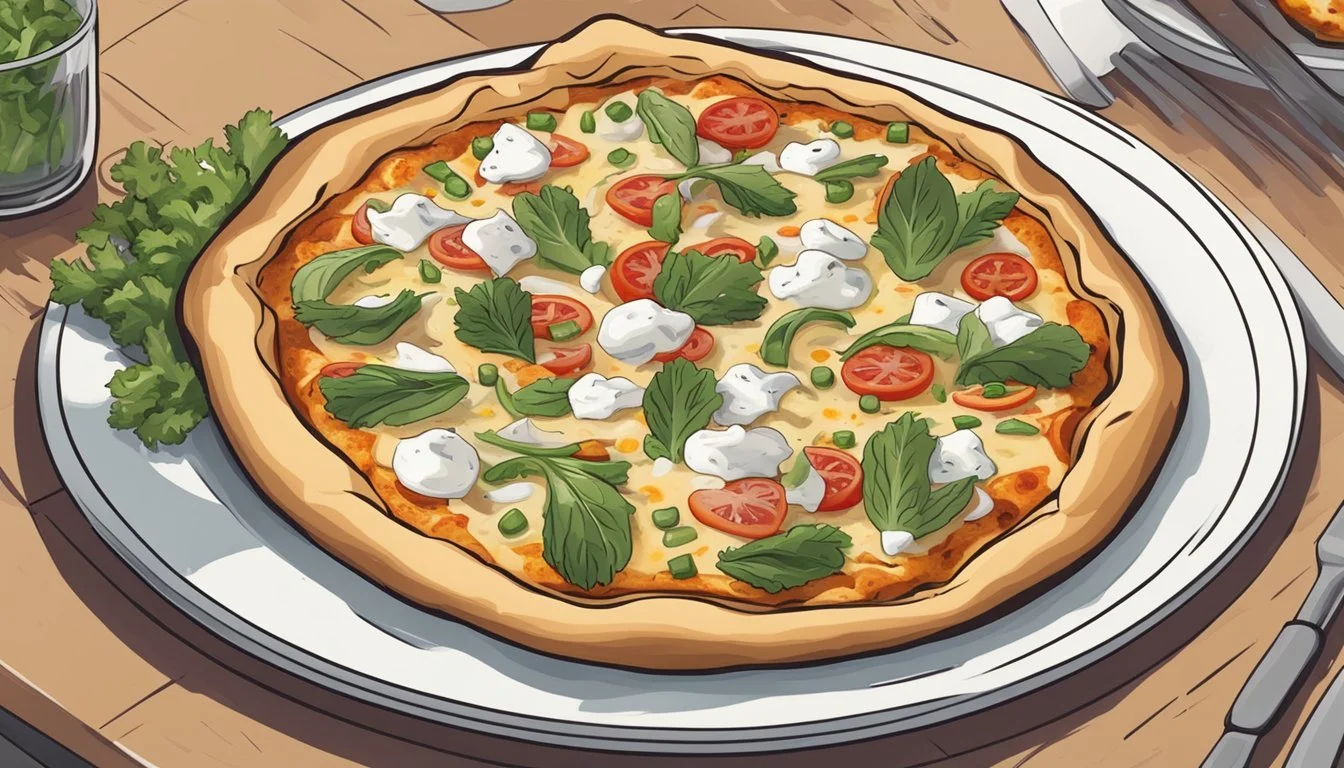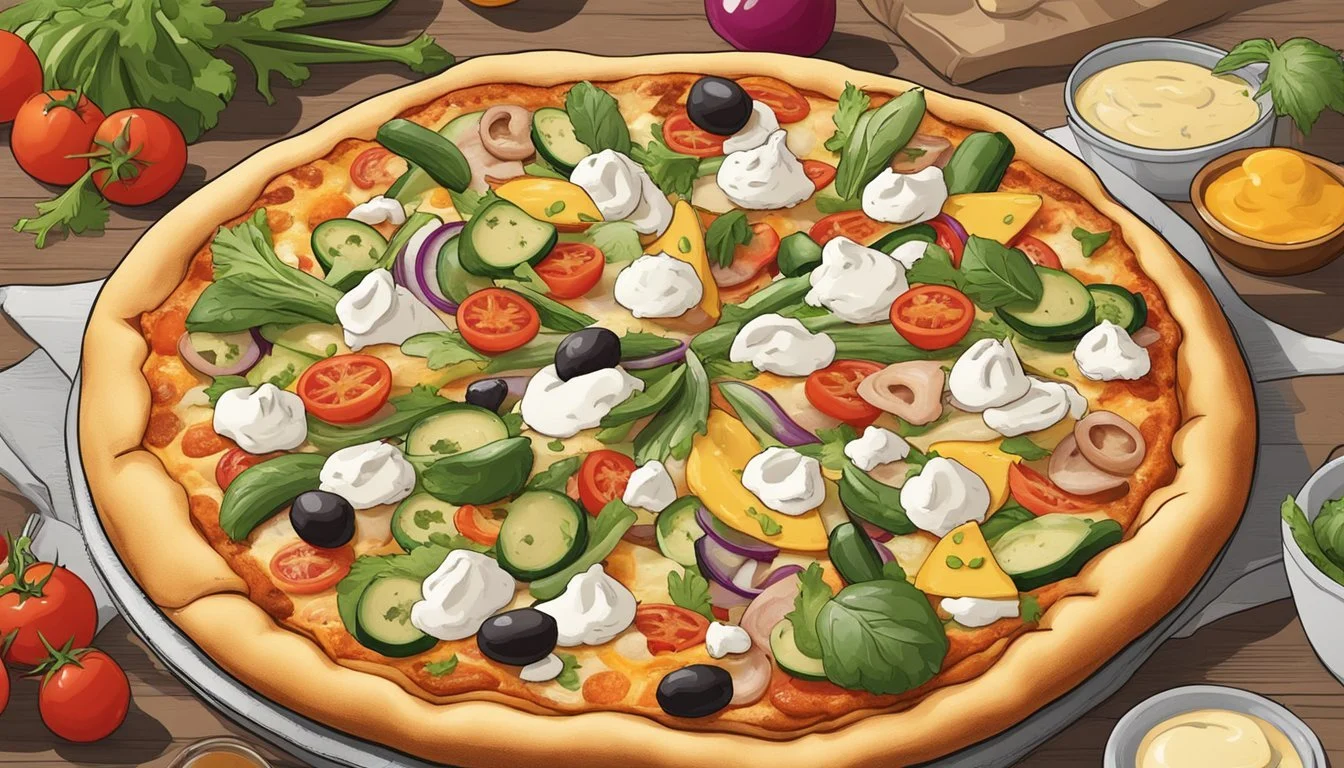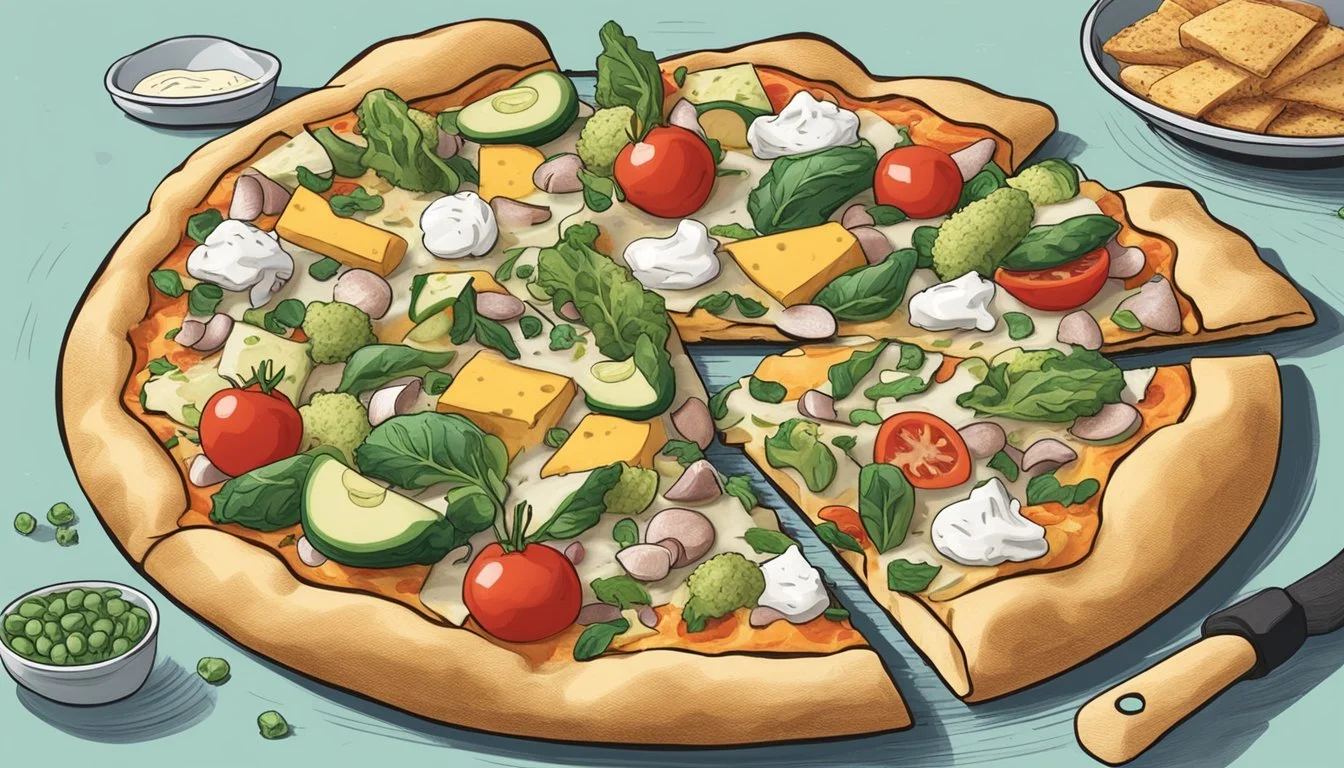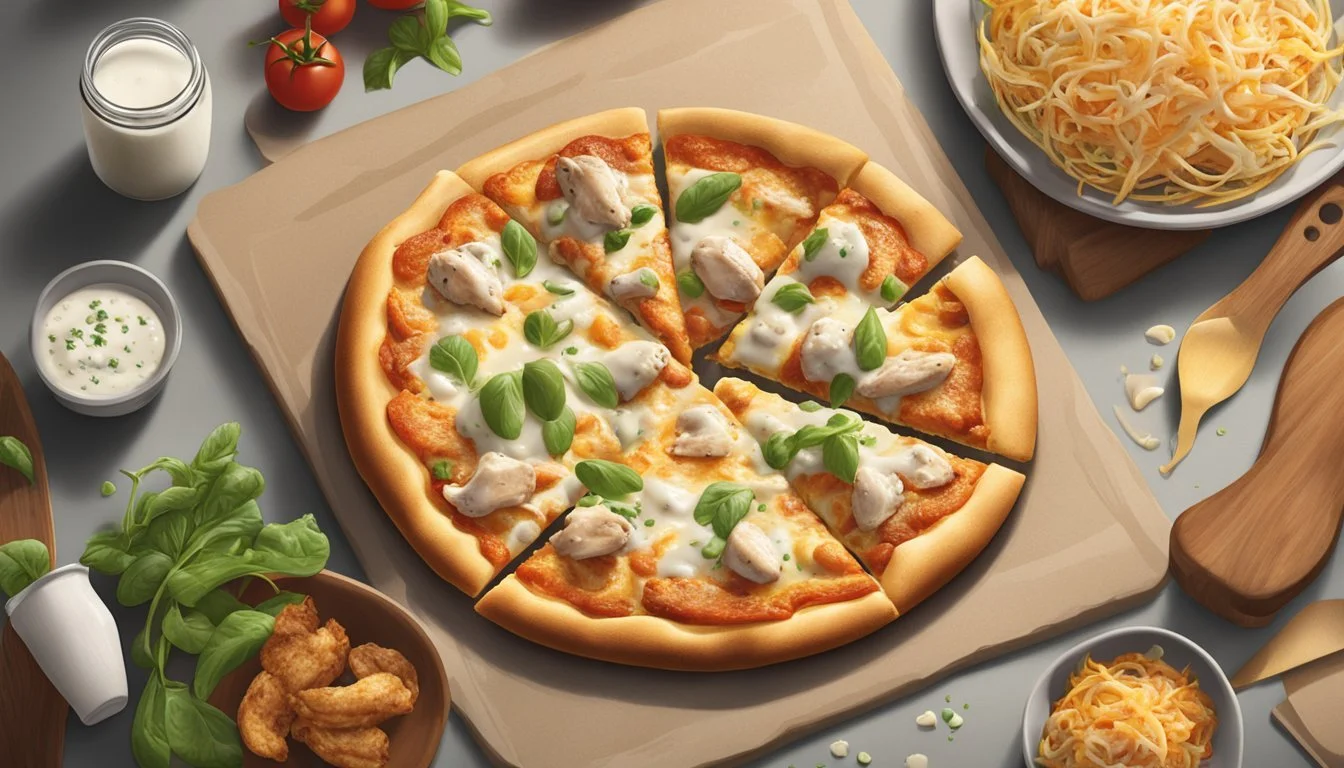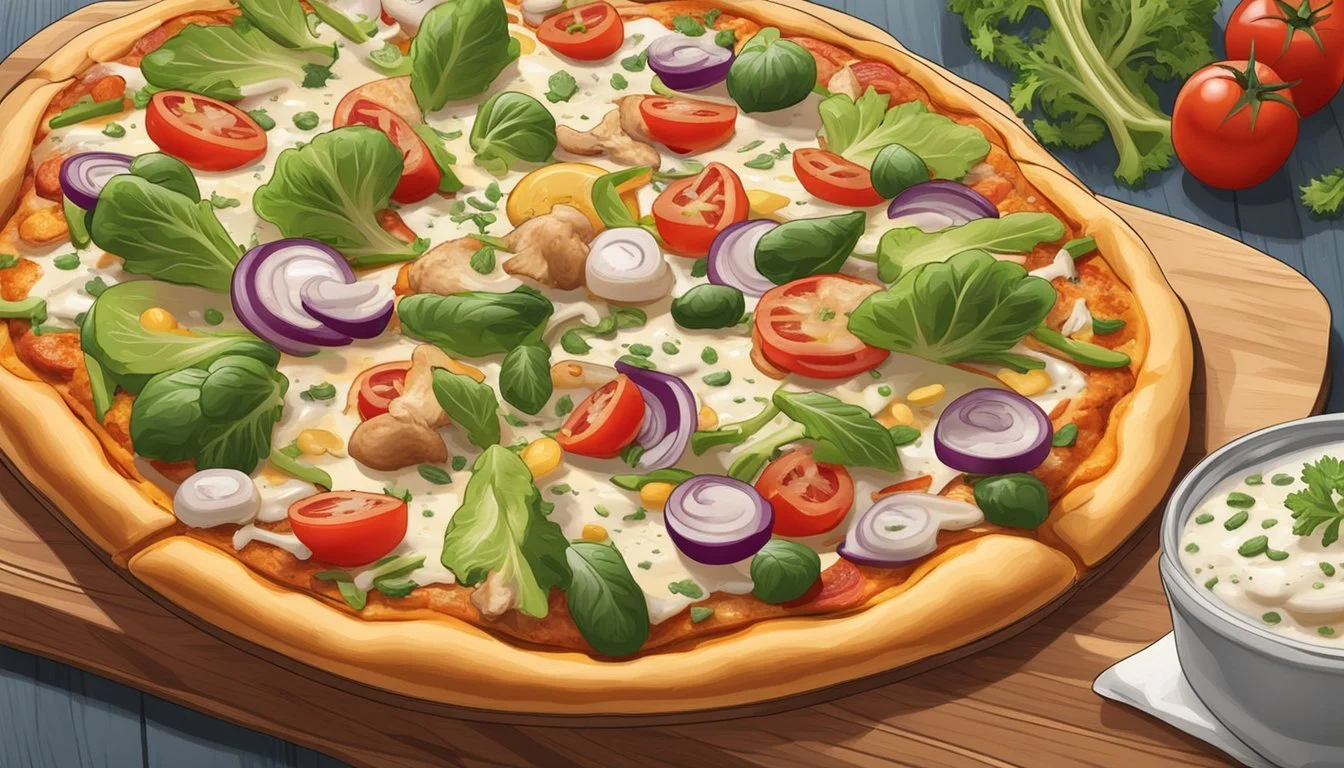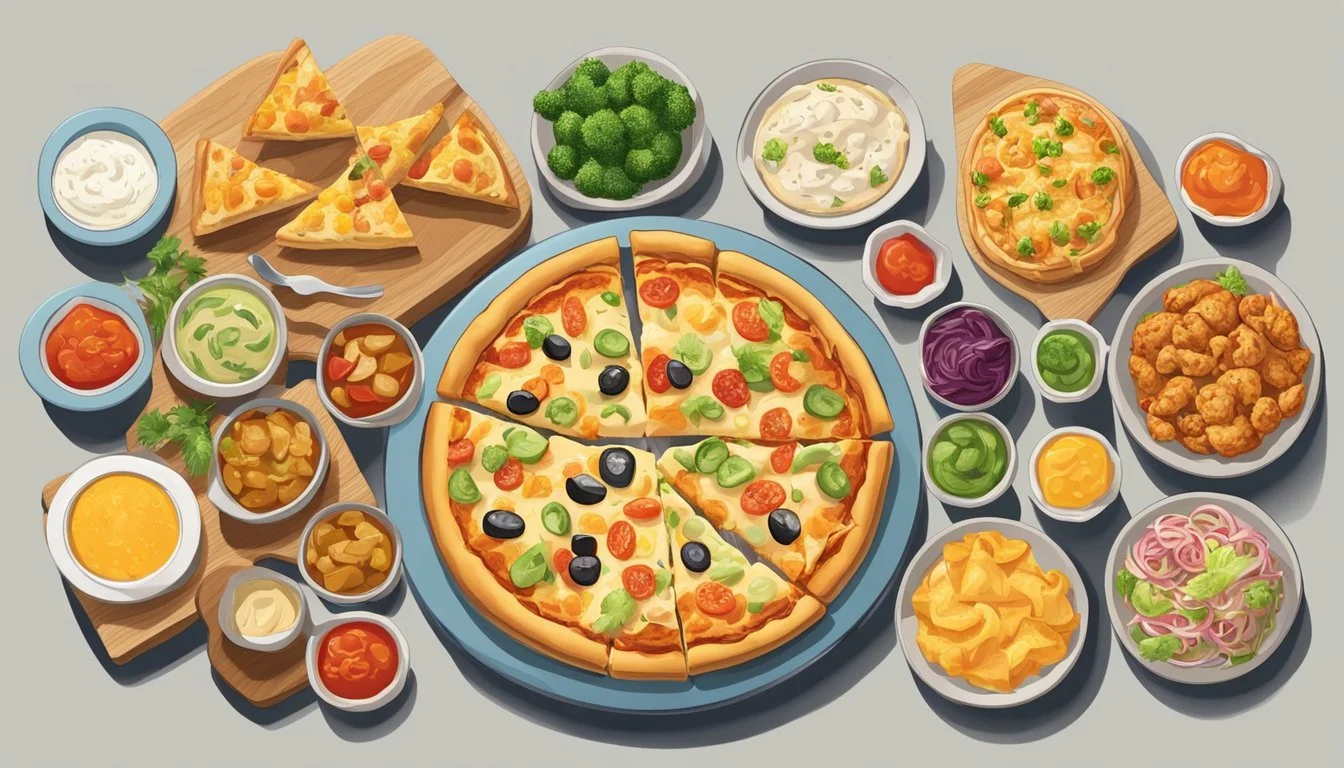Is Chicken Ranch Pizza Vegan?
Unveiling the Ingredients
When considering whether a pizza (What wine goes well with pizza?) is vegan, one must evaluate the ingredients that constitute its toppings, sauce, and crust. Chicken ranch pizza typically includes non-vegan elements such as chicken, cheese, and ranch dressing which is traditionally made with buttermilk. These ingredients clearly contain animal products, making the standard chicken ranch pizza unsuitable for a vegan diet.
However, the rise of veganism has led to the creation of plant-based alternatives that mimic traditional pizza toppings, (What wine goes well with pizza toppings?) including vegan chicken, vegan cheese, and ranch-style dressings made without dairy. While these alternatives make it possible to adapt a chicken ranch pizza into a vegan-friendly option, the availability of such modifications can vary greatly between pizzerias. Some establishments offer vegan versions of classic pizzas, while others may allow for customization, such as substituting dairy cheese with vegan cheese or forgoing cheese altogether.
Even with these alternatives, the vegan status of a pizza also hinges on the dough and sauce. Most pizza doughs are naturally vegan, made from flour, water, yeast, and salt, but some might contain dairy or eggs. Similarly, some pizza sauces might contain cheese or animal-derived flavorings. Therefore, individuals following a vegan lifestyle must inquire about or research the components of a chicken ranch pizza at each specific restaurant to ensure all elements are plant-based.
Understanding Veganism
Veganism is a dietary and lifestyle choice that excludes all forms of animal products. It's a commitment to plant-based eating that benefits animals, the environment, and personal health.
Defining a Vegan Diet
A vegan diet strictly avoids any animal-derived ingredients. This includes meat, dairy, eggs, and honey. Vegans choose foods that are not only free from direct animal products but also any byproducts resulting from animals. The table below provides an overview of dietary choices:
Diet Type Animal Meat Dairy Products Eggs Honey Vegan Cheese Vegan No No No No Yes Vegetarian No Yes (some forms) Yes (some forms) Yes (some forms) Yes
Note: Vegetarian diets may vary in what is permissible; some vegetarians may consume dairy and eggs, while others do not.
Common Ingredients in Vegan Cooking
In vegan cooking, a variety of plant-based ingredients replace traditional animal-based products. Some key ingredients include:
Vegan Cheese: Made from nuts, soy, or root vegetables and designed to replicate the taste and texture of dairy cheese.
Dairy-Free Milks: Non-dairy milk substitutes, such as almond, soy, oat, and coconut milk, are used in place of cow's milk.
Meat Substitutes: Plant-based proteins like tofu, tempeh, seitan, (What wine goes well with seitan?) or commercially available meat alternatives.
Binding Agents: For eggs, options like flaxseeds mixed with water, applesauce, or mashed bananas are common.
These ingredients are not only used in vegan households but are becoming more prevalent in restaurants offering vegan options. They allow for a diverse and nutritionally complete diet, and innovation in this space has led to products that closely mimic their animal-based counterparts in both flavor and texture.
Pizza Fundamentals
In the context of creating a vegan pizza, the dough, crust, and cheese alternatives form the foundation. These components determine not only the taste and texture but also whether the pizza adheres to vegan standards.
The Basics of Pizza Dough
Pizza dough is the starting point of any pizza, vegan or otherwise. It typically consists of all-purpose flour, water, yeast, and olive oil—all of which are inherently vegan. To prepare the dough, these ingredients are mixed, kneaded, and then allowed to rise, creating the base for a pizza.
Varieties of Pizza Crust
The variety of pizza crusts range from thin and crispy to thick and chewy, each requiring different baking times and temperatures. While traditional crusts are vegan, some variants might include non-vegan ingredients such as dairy or eggs. It's crucial to verify the ingredients or specify a vegan crust when ordering or purchasing premade crusts.
Vegan Alternatives for Cheese
Vegan cheese is essential for a vegan pizza as traditional pizza cheeses are dairy-based. Vegan alternatives are often made from nuts, soy, or root starches and come in various flavors and melting properties. They can be sprinkled on top of the pizza before baking to give a similar experience to conventional cheese-topped pizzas. Vegan pizza enthusiasts can experiment with different vegan cheese brands to find the one that best suits their flavor preferences and desired texture.
Ranch Dressing Explored
Ranch dressing, a staple in American cuisine, typically contains a blend of herbs and dairy products. This section will discuss the specific ingredients found in traditional ranch as well as the creative substitutions employed in vegan variations.
Traditional Ranch Ingredients
Traditional ranch dressing's creamy texture and tangy flavor primarily come from a combination of:
Mayonnaise
Sour cream or buttermilk
Herbs and spices: This often includes
Dill
Garlic powder
Onion powder
Parsley
Chives
These ingredients are mixed to create the classic ranch dressing that many enjoy as a salad dressing or a dipping sauce.
Vegan Ranch Variations
Vegan ranch strives to mimic the flavor profile of traditional ranch while using plant-based ingredients. Common substitutions include:
Vegan mayonnaise in place of regular mayonnaise
Dairy-free alternatives, such as vegan sour cream or non-dairy yogurt, to substitute for sour cream and buttermilk
Herbs and spices remain the same, ensuring the signature ranch taste
A popular vegan ranch recipe might include the following:
Vegan Mayo
Non-dairy milk (added gradually)
Apple cider vinegar or lemon juice
Dried or fresh herbs: Dill, parsley, and chives
Seasonings: Garlic powder, onion powder, salt, and black pepper
These ingredients are combined and adjusted for consistency and taste to closely replicate the original ranch dressing's flavor without any animal products.
Chicken on Pizza
Chicken is a popular protein choice for pizza toppings known for its versatility and flavor. With the rise of plant-based diets, there is also an increasing presence of vegan chicken alternatives that closely mimic the taste and texture of real chicken.
Chicken as a Topping
Chicken acts as a substantial protein-rich topping that complements various pizza styles, particularly the well-liked Chicken Bacon Ranch Pizza. It is commonly prepared by cooking the chicken and then adding it to the pizza before baking to achieve a delicious, savory flavor and a pleasing texture.
Cooking Methods: Chicken is often either grilled or sautéed before being added to pizza.
Complementary Flavors: Classic combinations include barbecue sauce, ranch dressing, and a variety of cheeses.
Vegan Chicken Alternatives
For those following a vegan diet or looking for plant-based options, vegan chicken alternatives are utilized to replace traditional chicken toppings on pizzas. These products are typically made from ingredients like soy, wheat gluten, or pea protein and are designed to replicate the flavor and texture of chicken.
Popular Brands: Gardein is one of the notable brands offering vegan chicken products suitable for pizzas.
Vegan Pizza Variations: Vegan versions of the Chicken Bacon Ranch Pizza utilize plant-based ingredients for all components, including the chicken, bacon bits, and cheese, ensuring that the entire dish is free from animal products.
Constructing Chicken Ranch Pizza
In this section, readers will learn how to prepare both the classic and vegan versions of chicken ranch pizza, focusing on the specific recipe steps, ingredients, and cooking techniques required for creating this popular dish.
Classic Chicken Ranch Pizza Recipe
To assemble a Classic Chicken Ranch Pizza, one starts by preheating their oven to 500°F, as a high temperature is crucial for achieving a crispy crust. A pizza stone can be employed for an even bake, placed in the oven during preheating. The pizza dough should be rolled out on a floured surface to create a 12-inch circle then transferred onto a pizza tray.
Toppings: Spread ranch dressing evenly over the dough, leaving a small margin around the edges for the crust. Top with a generous amount of mozzarella and cheddar cheeses, cooked chicken slices, and bacon crumbles.
Baking: The assembled pizza is then baked in the preheated oven until the cheese is bubbly and the crust turns golden brown, approximately 13-15 minutes.
Creating a Vegan Chicken Ranch Pizza
Constructing a Vegan Chicken Ranch Pizza requires the use of plant-based substitutes. Begin with preheating the oven to a temperature appropriate for the chosen vegan dough, often around 475°F. Prepare a baking surface, such as a pizza stone or tray, per the dough's instructions.
Vegan Toppings: Instead of traditional ranch, a vegan ranch dressing is spread as the base. Next, add vegan cheese (commonly a blend of vegan mozzarella and cheddar alternatives), followed by vegan chicken products and vegan bacon bits.
Vegan Cheese: Opt for high-quality vegan cheese that melts well for the best result.
Baking: Bake the pizza in the oven following the instructions specific to the vegan dough used, typically around 15-20 minutes, until the crust edges turn golden and the vegan cheese has melted.
Both pizzas are a celebration of flavor and texture, where the tanginess of the ranch pairs splendidly with the savory toppings and a perfectly cooked crust. The process of creating each version involves meticulous topping layering and timing the bake to achieve the desired doneness.
The Culinary Experience
When exploring the culinary landscape of chicken ranch pizza, one should pay close attention to its unique flavor profile and the texture that defines its character.
Flavor Profile of Chicken Ranch Pizza
Chicken ranch pizza marries the savory taste of chicken with the tangy and creamy zest of ranch dressing. The pizza often includes a base sauce, which can be traditional tomato or a homemade ranch sauce. Toppings typically consist of seasoned chicken and a sprinkle of herbs, providing a delectable umami-rich experience. The balance of flavors is punctuated by the addition of cheese, which melts into a gooey layer, enhancing the overall richness of the pizza.
Base Sauce: Tomato or Homemade Ranch
Main Toppings: Seasoned Chicken, Herbs
Cheese: Adds a rich, creamy texture
Texture and Consistency
Texture plays a pivotal role in the enjoyment of chicken ranch pizza. The crust serves as the foundation and is often expected to be both crispy on the outside and airy on the inside. Toppings contribute to the mouthfeel; the chicken should be tender and the cheese should provide a smooth, stretchy consistency. The interplay between the crisp crust and the soft toppings creates a satisfying contrast that is essential to the pizza's allure.
Crust: Crispy outer edge, Airy body
Chicken: Tender
Cheese: Melty, Stretchy
Nutrition and Health Considerations
When evaluating the nutrition and health considerations of chicken ranch pizza, specifically its vegan suitability, it's essential to scrutinize its caloric and nutrient content while balancing taste preferences with health-related implications.
Caloric and Nutrient Content
Chicken ranch pizza, as traditionally prepared, includes chicken, cheese, and ranch dressing—all of which are non-vegan ingredients high in calories and fat. A vegan variant would omit these and potentially substitute plant-based alternatives. However, potential customers should consider the nutritional information of these substitutes as they can vary significantly.
Calories: Vegan cheeses and meat substitutes may still be calorie-dense.
Fat: Depending on the brand, vegan cheese can be high in saturated fats.
Sodium: Meat substitutes often contain added sodium for flavor.
Calcium: Plant-based cheeses may be calcium-fortified, contributing to calcium intake.
Fiber: Vegetables additions can increase the pizza's dietary fiber content.
Balancing Taste and Health
In the context of a vegan diet, individuals often seek to find a harmonious balance between enjoying the flavor profile of their meals and ensuring nutritional adequacy. A health-conscious eater would look for a pizza that provides:
Plant-based toppings rich in nutrients like fiber and vitamins while being lower in calories and fat.
Vegan cheese options that are low in saturated fat and sodium but may offer some calcium.
A crust made without animal products that doesn’t compromise on texture or taste.
It should be noted that while vegan pizzas exclude animal products, this does not inherently make them healthier. They should be consumed as part of a balanced diet.
Additional Pizza Preparations
When crafting a vegan chicken ranch pizza at home, one should carefully consider the sauce and the baking method to achieve the best flavor and texture. The sauce is the foundation of flavor, while the baking method will determine the crust's crispiness and overall pizza quality.
Homemade Pizza Sauce Options
For a vegan chicken ranch pizza, crafting a homemade sauce ensures control over the ingredients. One might opt for a classic tomato-based marinara sauce made from scratch using fresh tomatoes, garlic, herbs, and a pinch of salt for seasoning. Alternatively, for a ranch-style base, whisk together vegan mayonnaise, garlic powder, onion powder, dried dill, and a splash of plant-based milk to achieve the creamy texture and tangy taste reminiscent of traditional ranch dressing.
Ingredients for Vegan Marinara Sauce:
Fresh tomatoes or canned tomato puree
Minced garlic
Fresh or dried herbs (basil, oregano)
Salt and pepper to taste
Ingredients for Vegan Ranch Sauce:
Vegan mayonnaise
Garlic powder
Onion powder
Dried dill
Plant-based milk
Baking Techniques and Tips
The choice of baking equipment is pivotal in pizza preparation. Using a pizza stone preheated in the oven can provide a pizzeria-like crust, as it simulates the conditions of a brick oven by distributing heat evenly. In case a pizza stone is not available, a well-oiled baking sheet is a suitable substitute. Preheat the oven to the highest temperature, typically around 475-500°F (246-260°C), to ensure a crisp crust.
For those who prefer an outdoor cooking experience, a grill can be utilized to make pizza with a smoky flavor. The dough should be placed directly on the grill grates over medium-high heat, and the toppings should be added quickly to avoid overcooking the base.
Baking Tips:
Preheat the oven or grill for at least 15-20 minutes before cooking.
Stretch the dough gently to avoid tearing.
If using a baking sheet, ensure it is well-oiled to prevent sticking.
Monitor the pizza closely during baking to prevent burning.
By being mindful of these sauce ingredients and baking techniques, one can produce a delicious vegan chicken ranch pizza that does not compromise on taste or quality.
Dietary Adaptations
When adapting the traditional chicken ranch pizza to suit various dietary needs, substitutions and omissions are necessary. For those requiring gluten-free and dairy-free alternatives, or for individuals following a vegan diet, changes to the crust, toppings, and sauce need to be considered carefully to maintain flavor while adhering to dietary restrictions.
Gluten-Free Pizza Options
For individuals with gluten sensitivities or celiac disease, gluten-free pizza crusts are an essential adaptation. These crusts are often made from a variety of gluten-free flours, such as rice, almond, or coconut flour. Whole wheat crust options, while healthier for some, are not suitable for those avoiding gluten. When preparing a gluten-free chicken ranch pizza, one must ensure that all other ingredients, including toppings and sauces, are also free of gluten to prevent cross-contamination.
Crusts: Choose bases made from rice, almond, coconut, or other gluten-free flours.
Sauces: Verify that ranch dressing and marinara sauce do not contain gluten.
Toppings: Opt for gluten-free cheese and meats, or use gluten-free vegan alternatives.
Addressing Different Dietary Restrictions
Beyond gluten-free needs, pizza can be adapted to meet various dietary restrictions such as dairy-free and vegan diets. Dairy-free diets require the exclusion of all dairy products, including cheese, which is a common pizza topping. To accommodate this, one can use dairy-free cheeses made from nuts or soy. For a pizza to be vegan, it must contain no animal products, which means replacing not only the cheese but also the chicken and ranch dressing with plant-based alternatives.
Dairy-Free: Utilize vegan cheeses or those made from alternatives like almond, soy, or cashew.
Vegan:
Cheese: Choose plant-based cheese alternatives.
Protein: Substitute chicken with vegan proteins such as tofu, tempeh, or plant-based chicken.
Dressing: Use vegan ranch varieties free from dairy and other animal products.
Allergens: When adapting for diet-specific needs, a thorough check for common allergens like nuts, soy, or wheat in substitute products is crucial.
By carefully selecting ingredients and ensuring that they meet the strict guidelines of these diets, one can enjoy a delicious and satisfying pizza that aligns with their dietary needs.
Enhancing Your Pizza
When selecting toppings or trying alternative pizza recipes, one has the opportunity to experiment with a diverse range of plant-based ingredients for a satisfying culinary experience.
Topping Variations
For those looking to enhance their vegan chicken ranch pizza, a variety of veggies can be great additions. Bold flavors can be achieved by incorporating olives, tomatoes, and spinach. To add crunch, one might consider adding broccoli or corn, creating not only a delightful texture but also a visual appeal. A wise choice for an extra layer of umami is mushrooms, which complement the overall flavor profile.
When considering dippings and dressings, traditional ranch could be replaced with a vegan variant, maintaining that creamy texture desired in a ranch pizza. Buffalo sauce, if dairy-free, can be used to add a spicy kick to the pizza, marrying well with the more neutral flavors of the vegetables.
Alternative Pizza Recipes
One might explore alternative pizza recipes within the vegan realm that deviate from the classic chicken ranch style. Below are some suggestions:
Recipe Base Sauce Signature Toppings Buffalo Chickpea Pizza Vegan Buffalo Sauce Chickpeas, Vegan Cheese, Spinach Barbecue Vegan Chicken Vegan BBQ Sauce Meatless Chicken, Red Onions, Cilantro Mediterranean Delight Hummus Artichokes, Kalamata Olives, Roasted Red Peppers
Each recipe provides a different set of textures and tastes while remaining within the vegan dietary confines. These variations ensure that individuals with plant-based preferences can still enjoy the diversity that pizza offers, without compromising on their values or flavor expectations.
Storage and Reheating
Proper storage and reheating techniques are crucial for maintaining the taste and quality of chicken ranch pizza. This section will guide readers through the best practices for freezing and thawing their pizza, as well as reheating it to ensure a delicious outcome that's as close to the original experience as possible.
Freezing and Thawing Pizza
To freeze chicken ranch pizza, one should ensure that the pizza has cooled completely to room temperature to prevent condensation buildup, which can lead to a soggy crust upon reheating. Slice the pizza if it is not already portioned, and wrap each piece tightly in plastic wrap followed by a layer of aluminum foil. Store in the freezer for up to two months for optimal freshness.
For thawing, it's recommended to transfer the pizza from the freezer to the refrigerator and let it thaw overnight. Avoid thawing at room temperature as this can cause the growth of bacteria and negatively affect the food's safety and quality.
Reheating Without Compromising Quality
To reheat your chicken ranch pizza while preserving its quality, follow these methods:
Oven Reheating:
Preheat your oven to 350 degrees F (175 degrees C).
Place the thawed pizza slices on a baking sheet or preheated pizza stone for a crisper crust.
Reheat for about 10 minutes or until the cheese is bubbly and the crust regains its crispness.
Microwave Reheating:
Although not ideal for crust crispness, using a microwave is a quick option.
Heat the thawed slices on a microwave-safe plate in 30-second intervals, checking for even warmth.
For a better texture, place a half cup of water in the microwave alongside the pizza to reduce sogginess.
Reheating times and temperatures may vary based on individual ovens and microwaves, so adjustments might be necessary. Always ensure that the pizza is heated through to a safe temperature of 165 degrees F (74 degrees C) before consuming.
Beyond the Pizza: Sides and Accompaniments
While a chicken ranch pizza typically includes non-vegan ingredients like chicken and cheese, there are versatile vegan side dishes and dipping sauces that can enhance the dining experience for those following a plant-based diet.
Complementary Side Dishes
Vegan side dishes can include a colorful array of vegetables and starches tailored to accompany a pizza. Some plant-based sides might feature:
Raw Salads: A simple, crisp salad with an assortment of fresh vegetables can balance the richness of a pizza.
Grilled or Roasted Vegetables: Options like zucchini and eggplant offer a smoky or caramelized flavor.
Starches: Vegan-friendly potato wedges or a corn side dish can provide a satisfying textural contrast.
Vegan Dipping Sauces
Dipping sauces can greatly enhance the flavor profile of vegan pizza and sides. Here are a few vegan options:
Vegan Mayo-Based: A creamy base for ranch-style or aioli dipping sauces.
Buffalo Sauce: Tangy and spicy, it works well with both pizza and crudité sides like celery.
When choosing vegan sides and sauces, diners should check ingredients carefully to ensure that they align with vegan standards.

